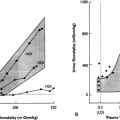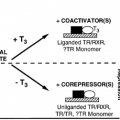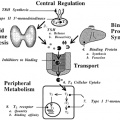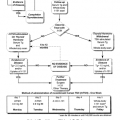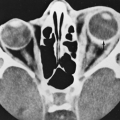SOMATOTROPE DEVELOPMENT AND GROWTH HORMONE
Several pituitary transcription factors are involved in pituitary somatotrope development. Their consideration is important here because mutations in their respective genes lead to abnormalities in the GH axis. The reader is referred to Chapter 8 and Chapter 11 for a full discussion of pituitary ontogeny. Developmental genes relevant to GH include the Prop-1, Pit-1 (also known as Pou1f1), and GH-releasing hormone receptor (GHRH-R) genes. These genes are expressed sequentially during anterior pituitary development; each is more restrictive in its impact on different cell types; and each is dependent on the activity of the preceding one.15 Prop-1 and Pit-1 are POU-homeodomain transcription factors, the GHRH-R is a seven transmembrane domain receptor signaling through the cyclic adenosine mono-phosphate (cAMP) pathway. Prop-1 is important for development of the gonadotrope, somatotrope, lactotrope, and thyroptrope lineages. Pit-1, under the direction of Prop-1, is involved in differentiation of somatotropes, lactotropes, and thyrotropes. The GHRH-R, which is exclusively expressed in somatotropes under the direction of Pit-1, is critical for the normal expansion of the somatotrope population. The GHRH-R is also necessary for GH synthesis and secretion (see later).
Stay updated, free articles. Join our Telegram channel

Full access? Get Clinical Tree


